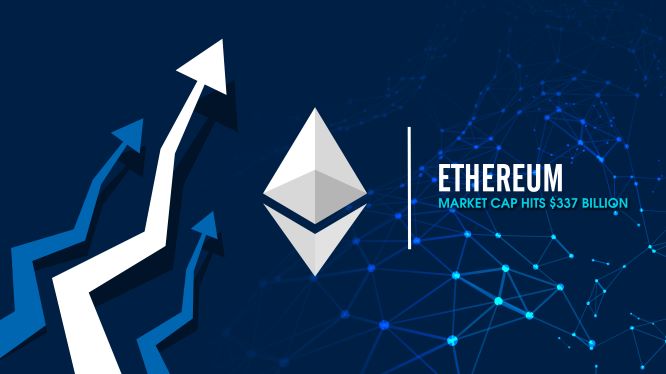Bitcoin and cryptocurrencies have become a hot topic in recent days, with several debates and discussions taking place in various circles, whether economic or simply trading-and-hype related, to determine the long-term viability of these blockchain-based currencies and whether they could be the next step for global economies.
Dr Gitanjali Swamy, daughter of Rajya Sabha MP and famous economist Dr Subramanian Swamy, took part in a webinar titled ‘Cryptocurrencies: Navigating Pros, Cons, and Human Impact’ hosted by the Virat Hindustan Sangam (a platform chaired by Subramanian Swamy) on its YouTube channel.
What is Bitcoin? Subramanian Swamy’s daughter Gitanjali explains cryptocurrencies
Gitanjali Swamy began her speech by outlining why currency was created after the barter system and the government’s role in managing the currency system. Speaking on the system of cryptocurrency, she said “Blockchain is a technological solution for letting mutually distrusting entities to agree upon history”.
She used the example of large Indian weddings to explain how the blockchain system works and what bitcoin mining is. Guests are invited who also become witnesses to the wedding, so none of the parties can later deny the wedding took place.
She inquired, “Why do we have such large weddings in India? Because if the groom subsequently disputes and claims, “I wasn’t there and I didn’t married,” you’ll have all these witnesses. That’s how the blockchain works, you’ll have all these individuals who are all witnesses “she stated.
What is Bitcoin mining?
“One of the witnesses will record the marriage, he is the pandit who says I am signing this marriage and saying this marriage happened. That is the notion of a miner,” she said.
A miner is a person/computer/node capable of solving the blockchain system’s incredibly complicated cryptographic issues, allowing that node to add a ‘block’ to the chain and earn bitcoin (or whatever cryptocurrency it is) as a reward. The node adds the block to the blockchain ledger,’ which is shared by the entire network rather than a single authority (such as a bank), making it decentralized. Cryptocurrency mining is done with specialized and complex computational hardware, however, it may also be done with ordinary computers (but don’t expect results).
Are Cryptocurrencies safe? What are the drawbacks?
While praising cryptocurrency’s revolutionary qualities, she also pointed out its flaws, claiming that miner collusion could represent a threat to blockchain technology.
“You’ll need trustworthy miners. Because there are so many of them, it’s a market. About 65-75 percent of the world’s bitcoin mining is done in China, where there is electricity and relatively simple access to manufacturers that create the specialised computer hardware needed to mine. As a result, miner collusion is the most serious issue. However, this does not rule out the possibility of cryptocurrencies. It is the time of the future.”
She also mentioned that because cryptocurrencies are anonymous, many ransomware attacks and payments are made using them because they are unregulated by the government. Cryptocurrencies have a significant level of volatility as well.
She did emphasise, though, that it is a developing financial market. During the virtual meeting, even Subramanian Swamy referred to cryptocurrencies as the “future subject” and stated that digital currencies are the most recent development in terms of paying for the exchange of products, describing them as unstoppable and urging for improved education.
What are cryptocurrencies?
Cryptocurrencies are digital currencies that are decentralized and based on blockchain technology. Despite the current popularity of cryptocurrencies such as Dogecoin and Bitcoin, there are dozens of distinct types of cryptocurrencies in circulation. Although digital currencies can be used to purchase everyday goods and services, many investors view them as assets similar to stocks or precious metals. There are also crypto platforms like Ethereum, which, in addition to having its own cryptocurrency, allows users to construct cryptocurrency applications and execute crypto contracts.
How does Cryptocurrency work?
Any digital money now in circulation is essentially a non-physical medium of trade that is encrypted and decentralised. Unlike physical currencies, digital money has no central authority to manage or maintain its value. Rather, the value of cryptocurrencies is disseminated widely among users via the Internet. Satoshi Nakamoto (believed to be a pseudonym, the real identity remains unknown) proposed Bitcoin as the first cryptocurrency in a 2008 paper titled “Bitcoin: A Peer-to-Peer Electronic Cash System.”
Who is Subramanian Swamy’s Daughter Dr Gitanjali Swamy?
Dr. Gitanjali Swamy holds a B.Tech from IIT Kanpur, an MBA from Harward Business School, a Ph.D. from Berkeley, and has also studied law (Juris Doctor) in the United States, according to the video above. She has 25 patents and data science articles to her credit. She was also named one of India’s Analytics Insight magazine’s Most Influential Women in Technology in 2020.
- How to Earn Yield on Bitcoin Against Runes Collateral
- Top 5 Ethereum NFT Marketplaces to Check Out in 2025
- How Indian players can use UPI and Paytm for online casino payments
- What’s all the buzz around meme coins? Let’s find out together.
- Ethereum in Sports: Tokenizing Athletes and Building New Fan Economies




